
IoT Platform Integration for Tech Company
Background
Company C, an existing customer of Fasteyes, is a medium-sized electronic manufacturing company, which has more than 300 staff working on its production line. As the company expanding rapidly, its managers were looking for a better solution to efficiently manage their equipment, the production line, and the workers.
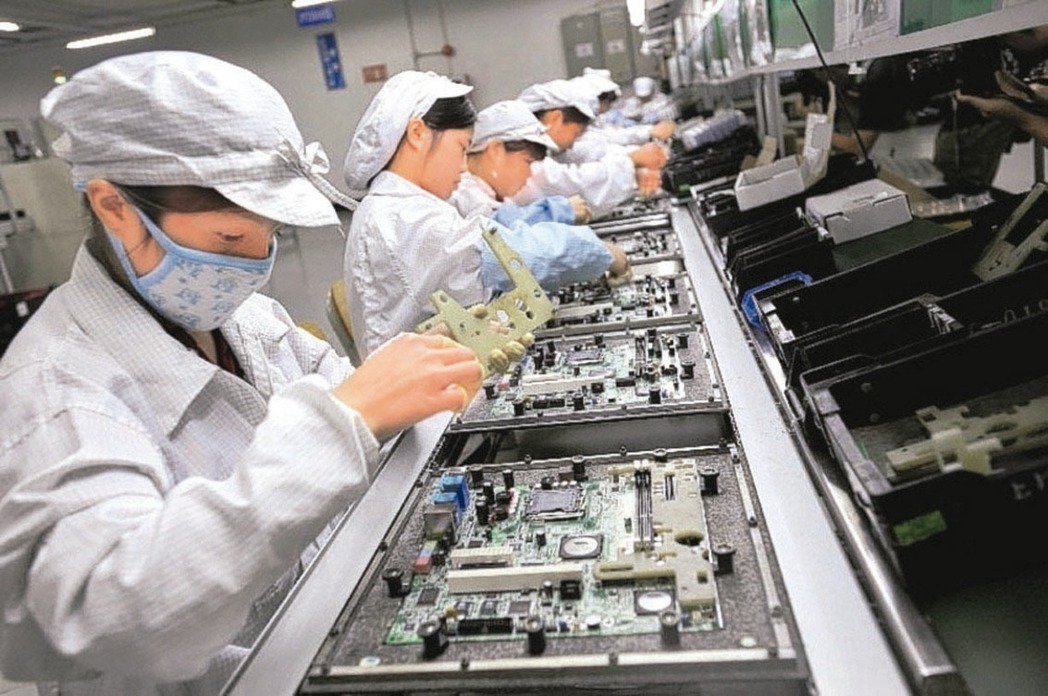
A general view of an electronic manufacturing company.
Team
- Project Lead
- UI / UX Designer
My Role
- Chang Ting Wei (Front-end engineer)
- Ricky (Back-end engineer)
Collaborate With
Requirements, Ideation and Wireframe

The reason to put requirements, ideation and wireframe together was that they were closely relevant in this case.
A Platform of Everything

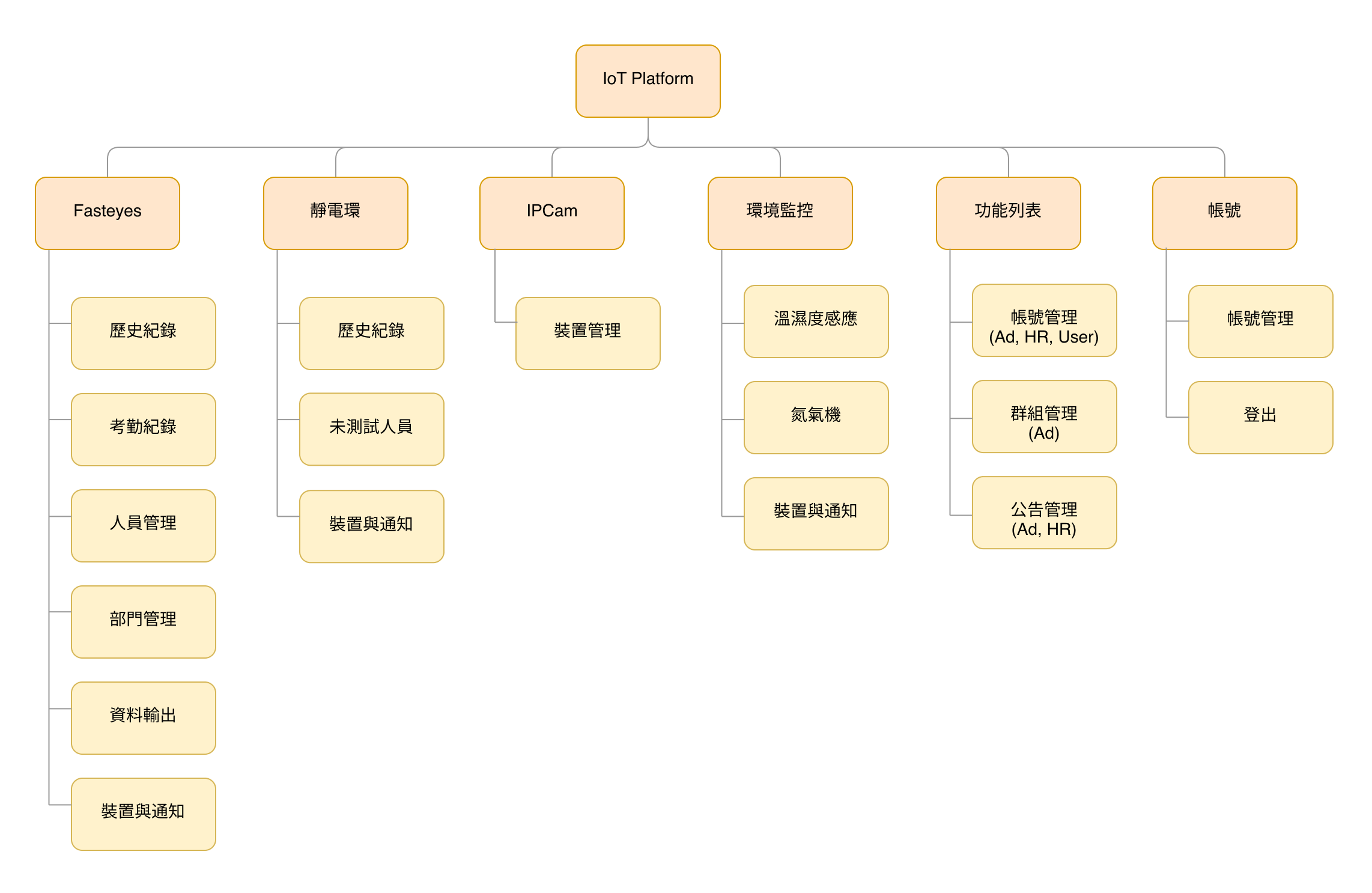
The sitemap.
Fasteyes Integration
Company C was currently using the Fasteyes service. They hoped that our team could combine it into this platform, and improve its functions.

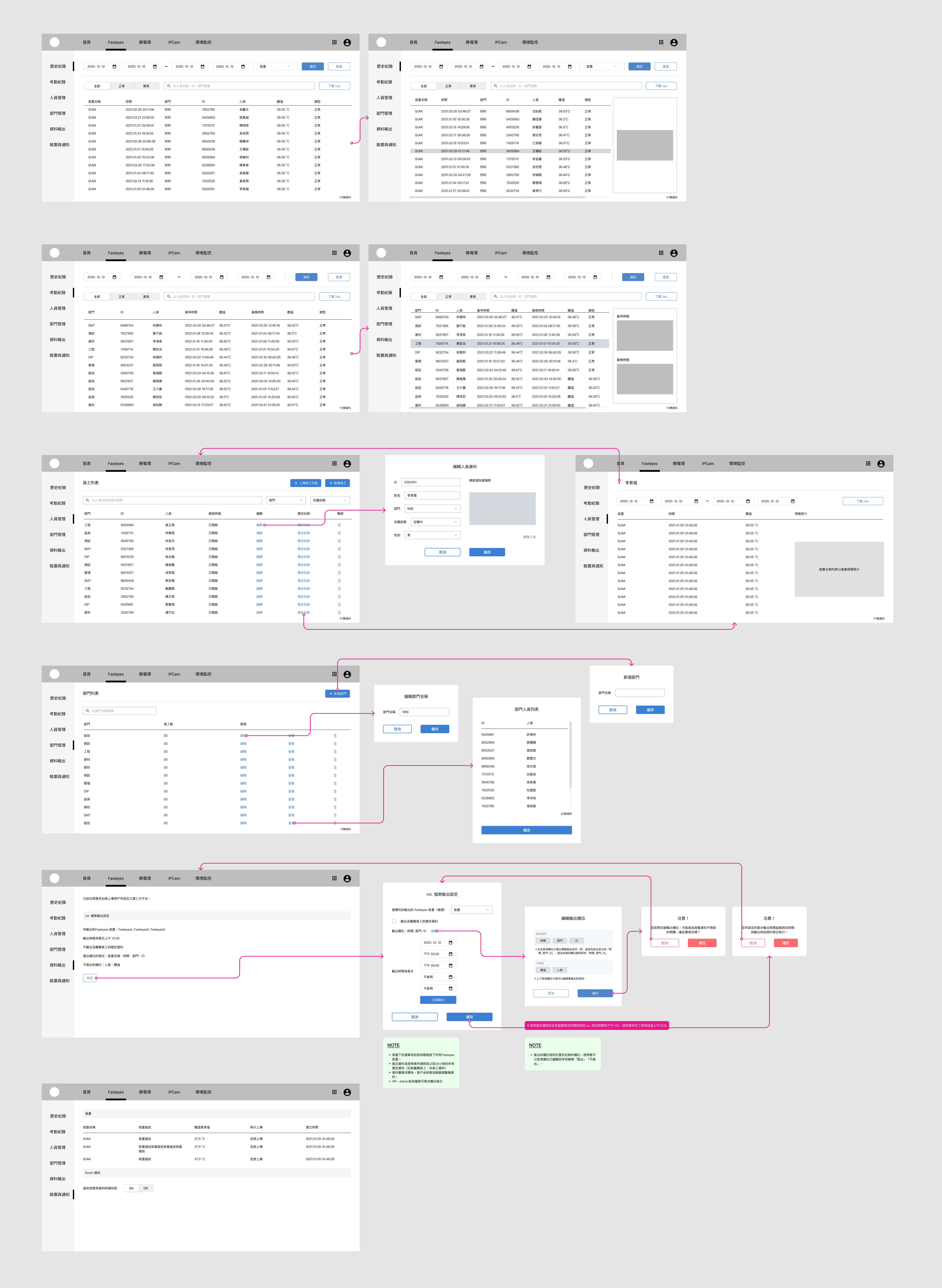
Electrostatic Rings Testing
Part of the staff working on the production line will be requested to test their electrostatic rings before entering the line. Presently, no one is supervising the process or check if there is abnormal cases. After some ideation, we decided to integrate the Fasteyes facial recognition service to automize the data collection process.


IPCams Streaming
Although the IPCams Company C owned already had its streaming platform, but it was still inconvenient to open it up, so they were also hoping to embed some cameras streams in the dashboard.

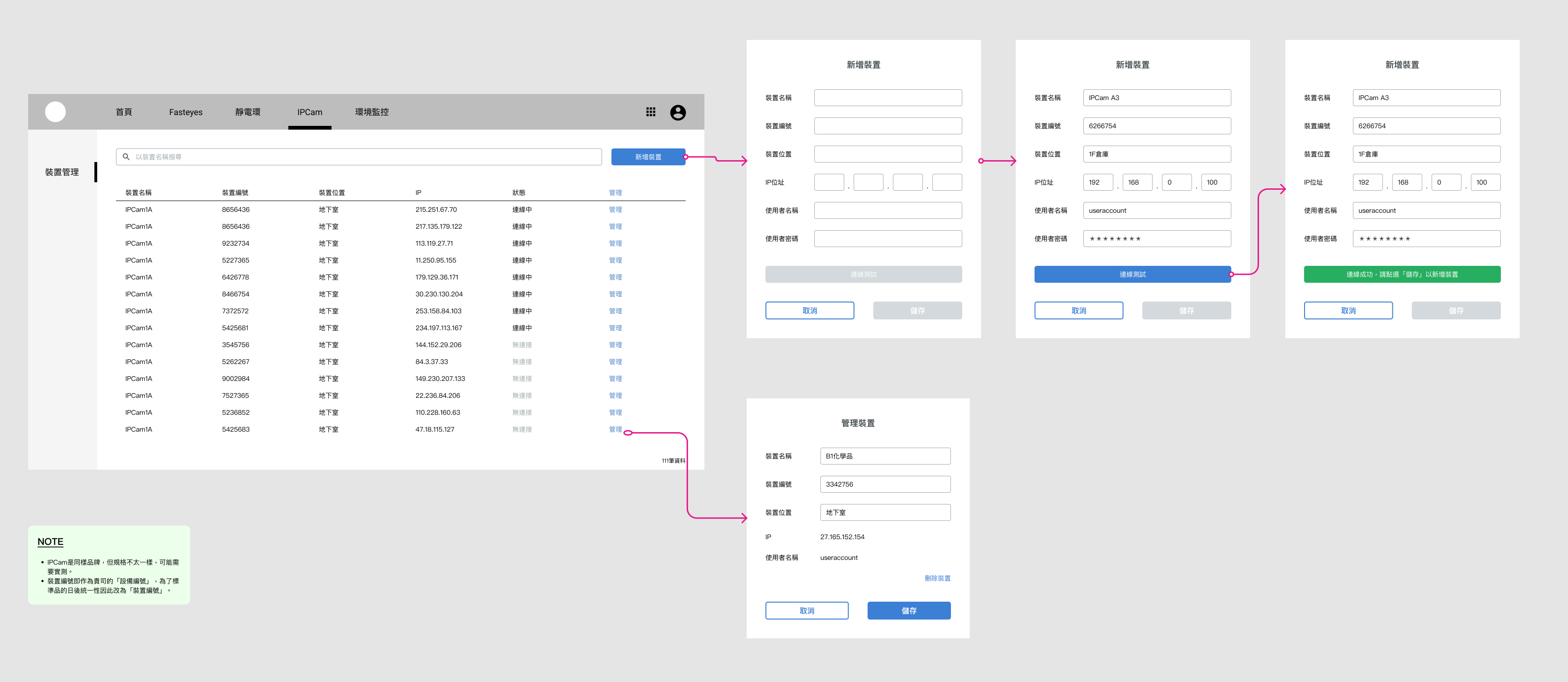
Environment Monitoring
Electronic manufacturing required the production line to be stable in temperature, humidity, and nitrogen pressure. 2 kinds of devices were used in this case.

Sensors for temperature and humidity.
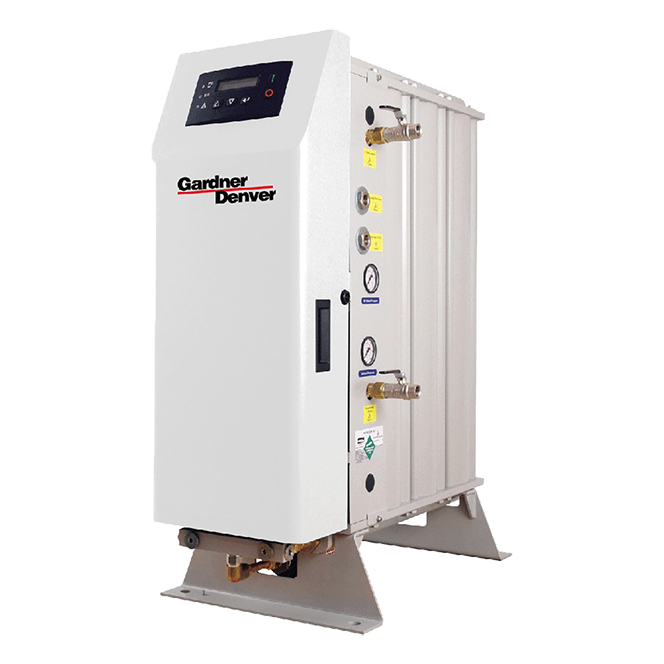
Nitrogen generators for nitrogen pressure and oxygen.


Dashboard
The dashboard will be displayed on large screens in each production line, for either managers or workers to view.
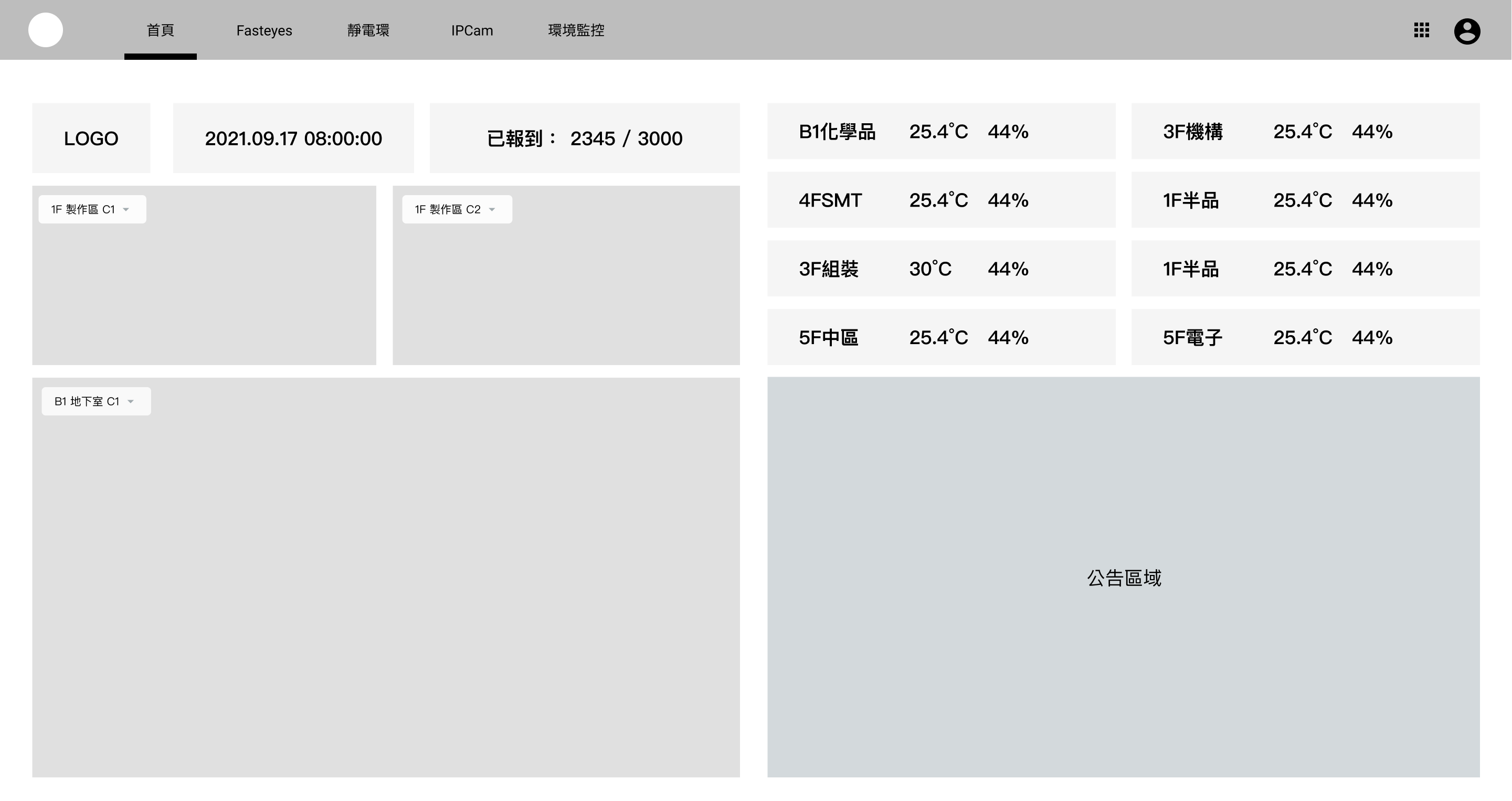
Design
Style Guide & Components
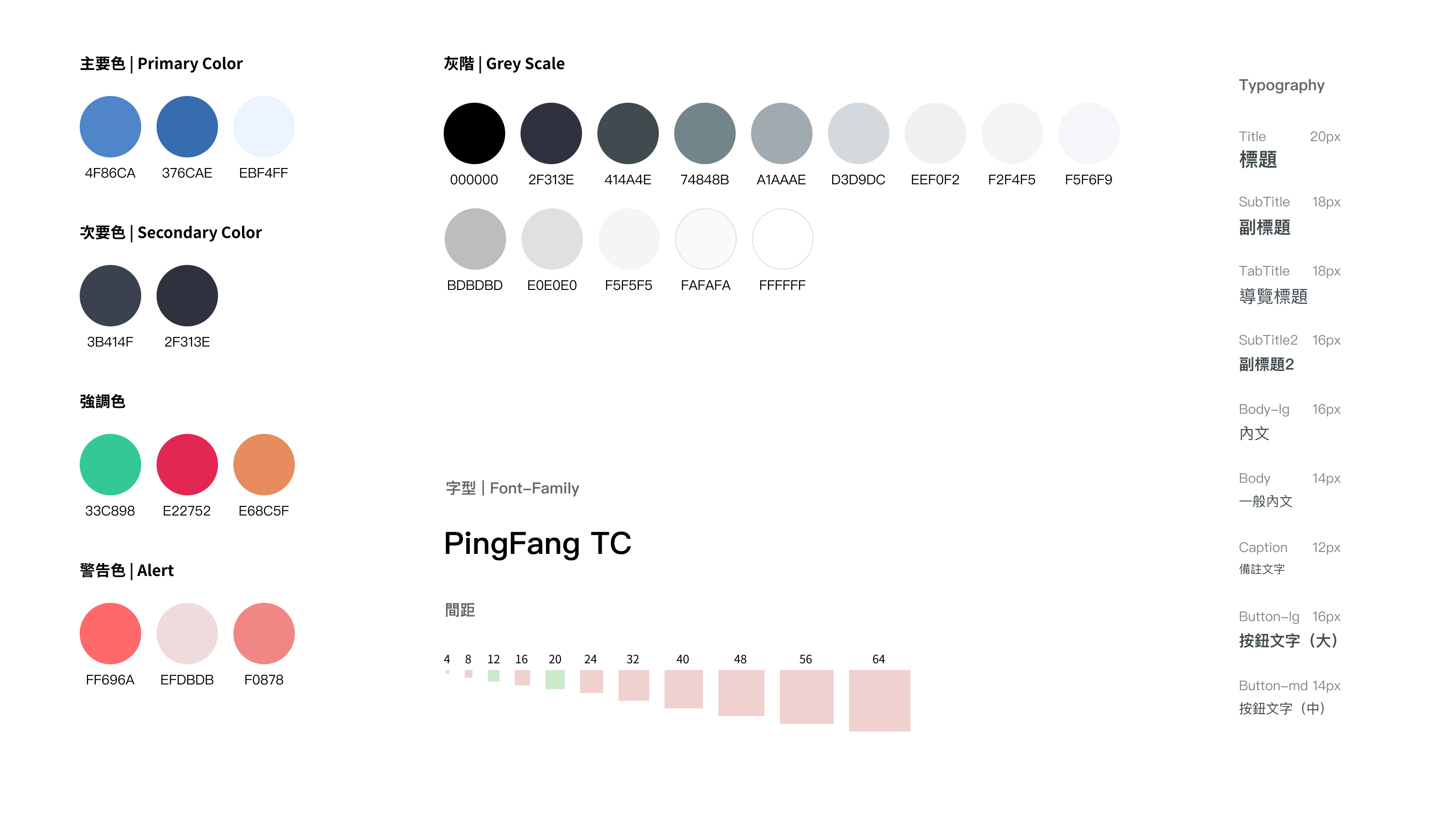
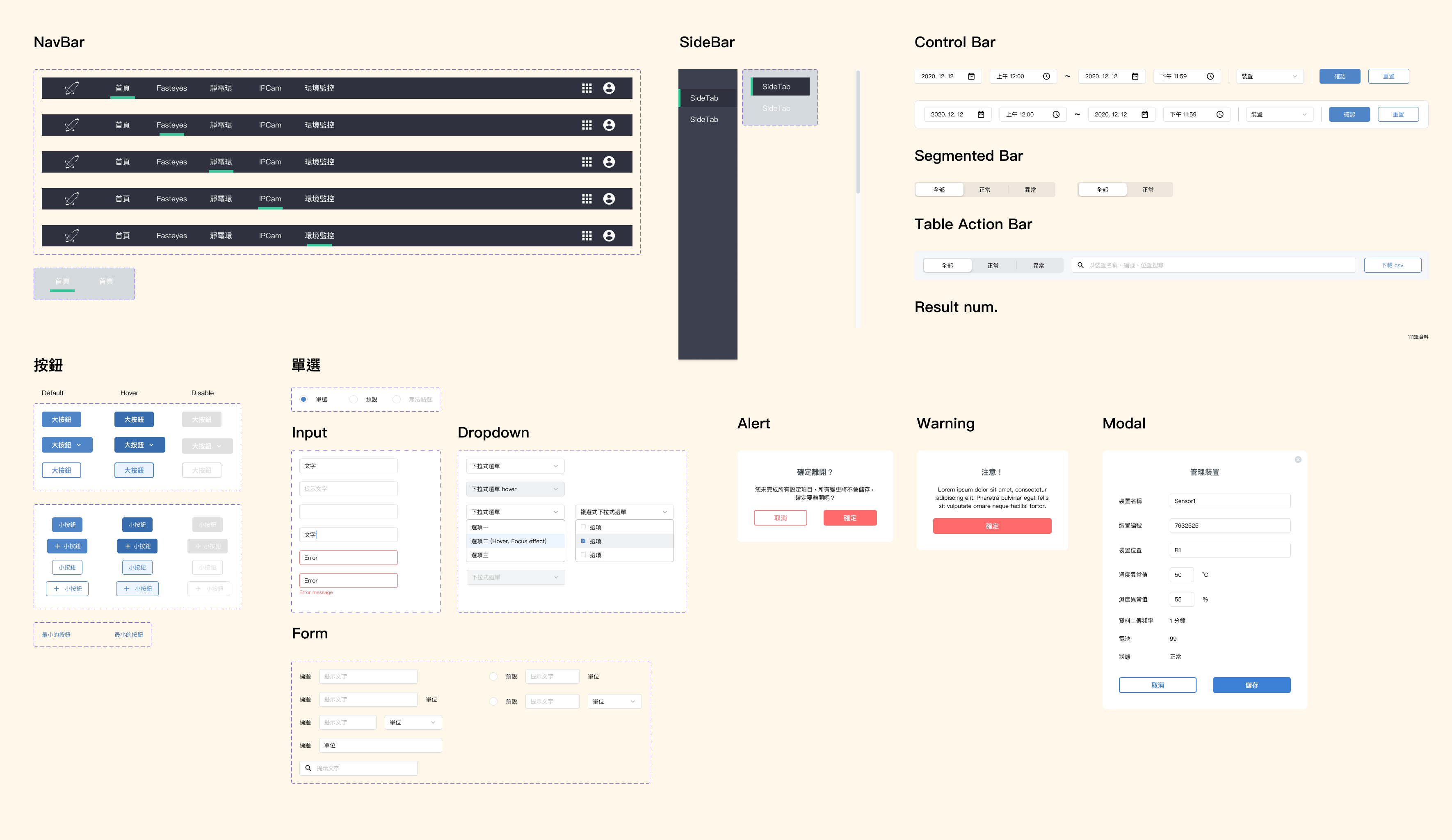
Fasteyes Integration & Redesign
Doing this project gave me a chance to redesign and improve the UX of current Fasteyes. Here are some big changes I made.
- Removing the original dashboard page
The dashboard page in the original Fasteyes is almost useless to most users, so we decided to remove it.
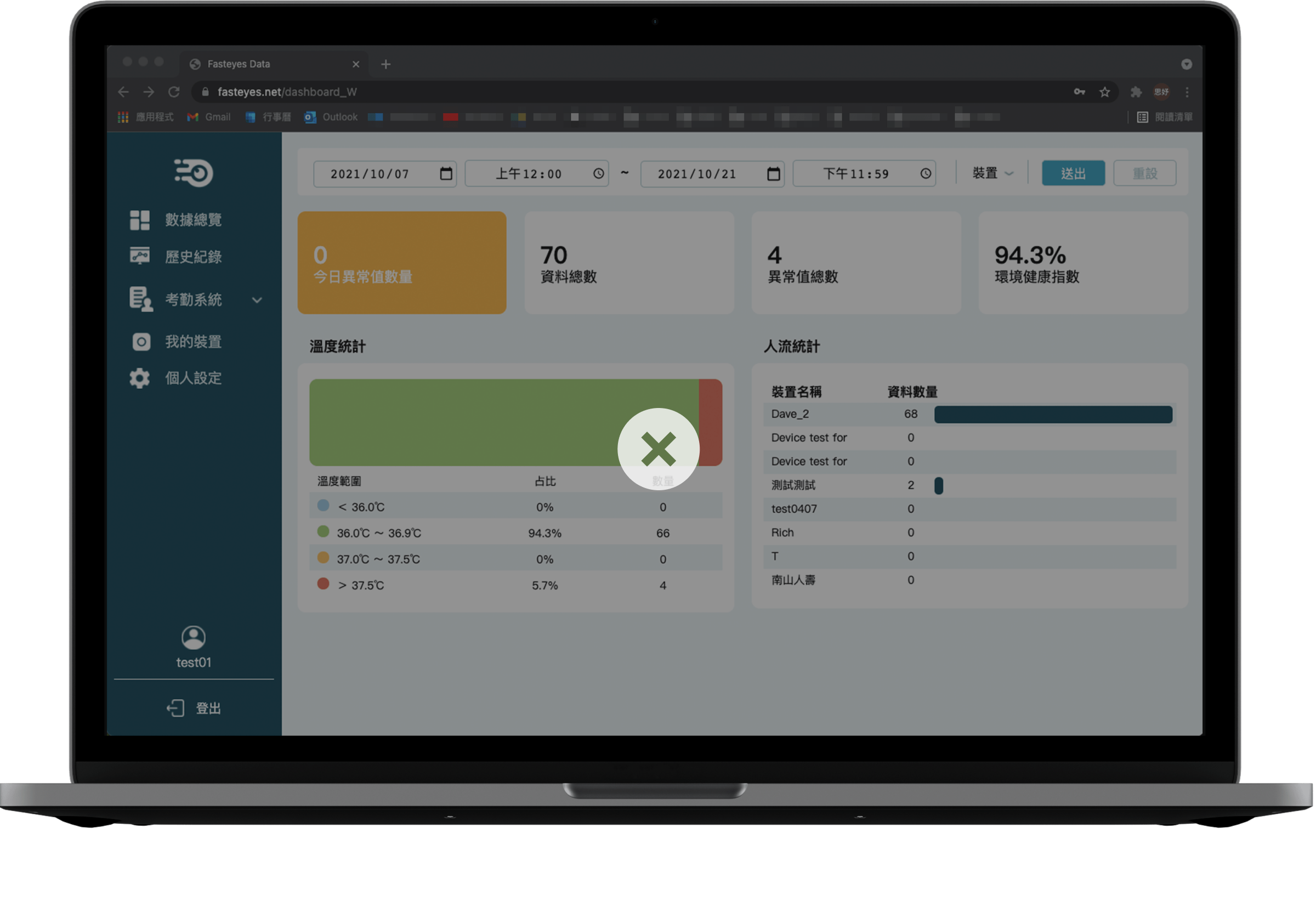
- The sidebar
The attendance system (考勤系統) used to be sold as an individual package, so in the old version, I designed a dropdown to wrap it up. The selling method was then changed so that the old dropdown menu became redundant.
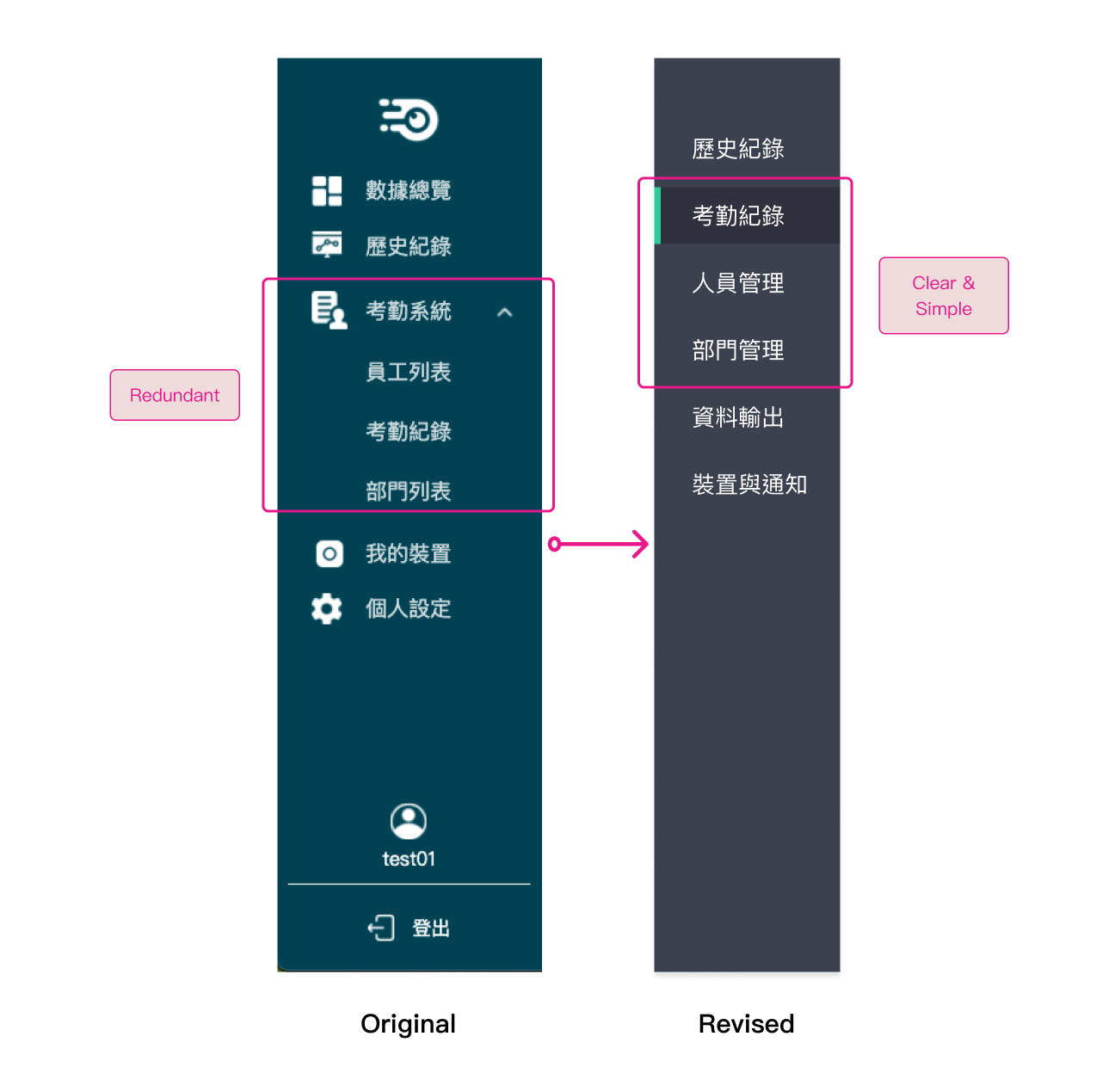
- The staff management page

The original user flow of the Fasteyes staff page.

Original
In the old version, a user needed to go through at least 3 to 4 steps to view the staff's personal history or edit their information. Also, the tab bar above was complicated to develop and was not really convenient to use.
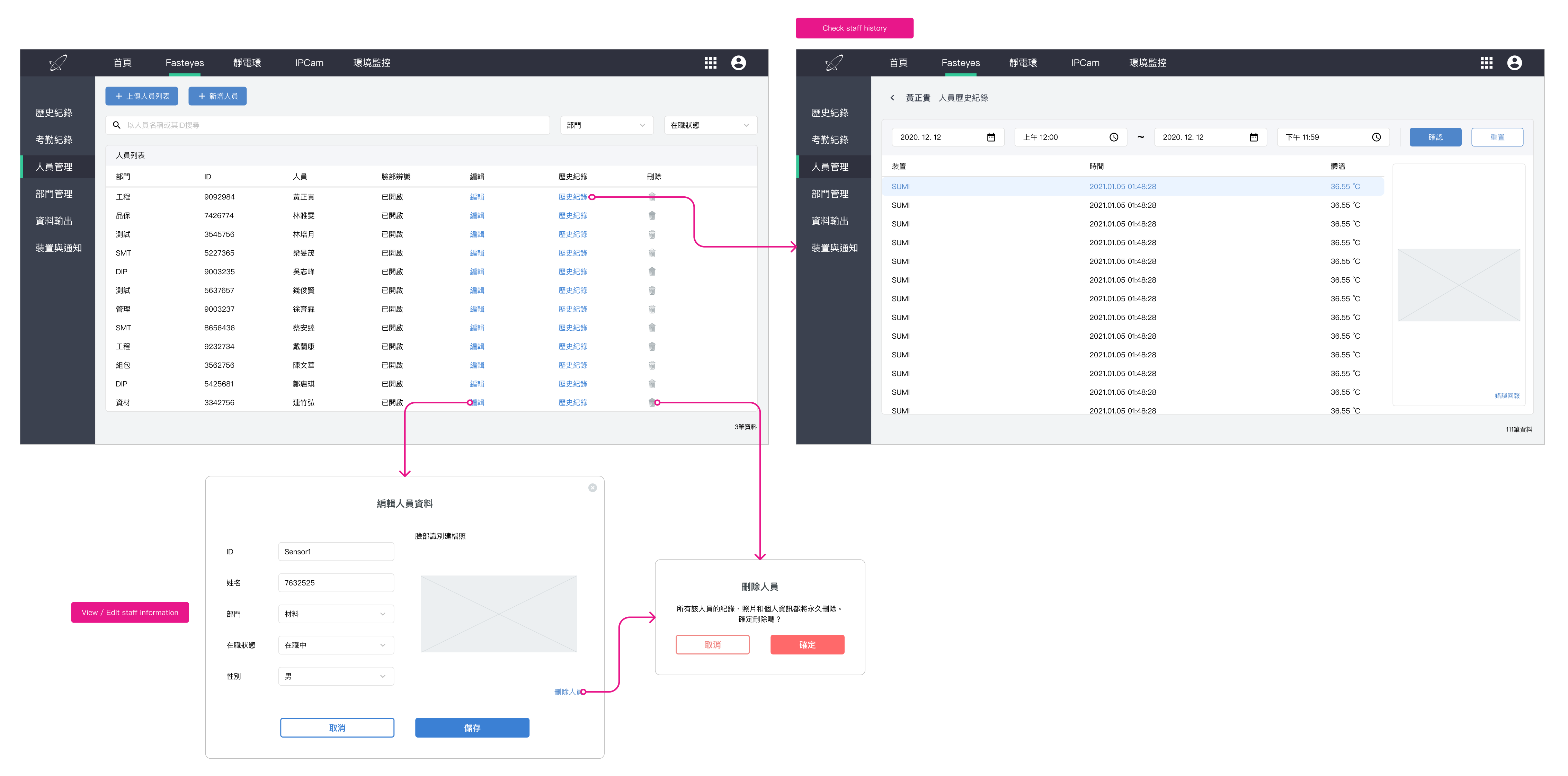
Revised
Therefore, in the revision, I put all the actionable buttons on the staff list, and the personal history on an individual page, so the user flow could be narrowed down to only 2 steps.
Dashboard
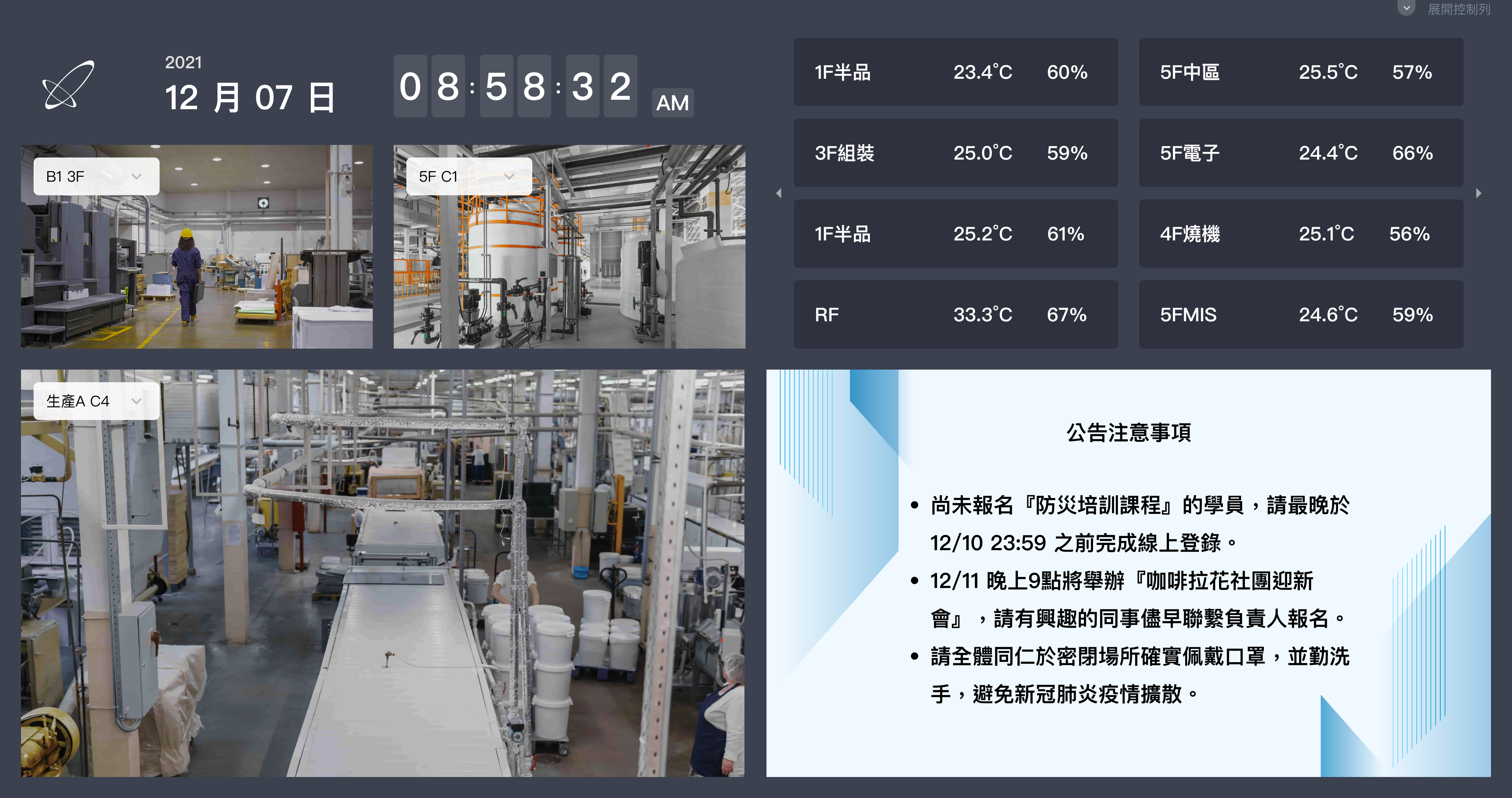
Our customer would display the dashboard on the large screen in the production room, so they wanted it to be clear and simple, with only the most essential information on it.
Devices Management & History
There are many devices connected to this platform. In order to make its management page easy and clean, I used lists to demonstrate them and put the editable columns on a modal page.
Here is an example of the environment monitoring devices management page.
- Device Management

- Device History
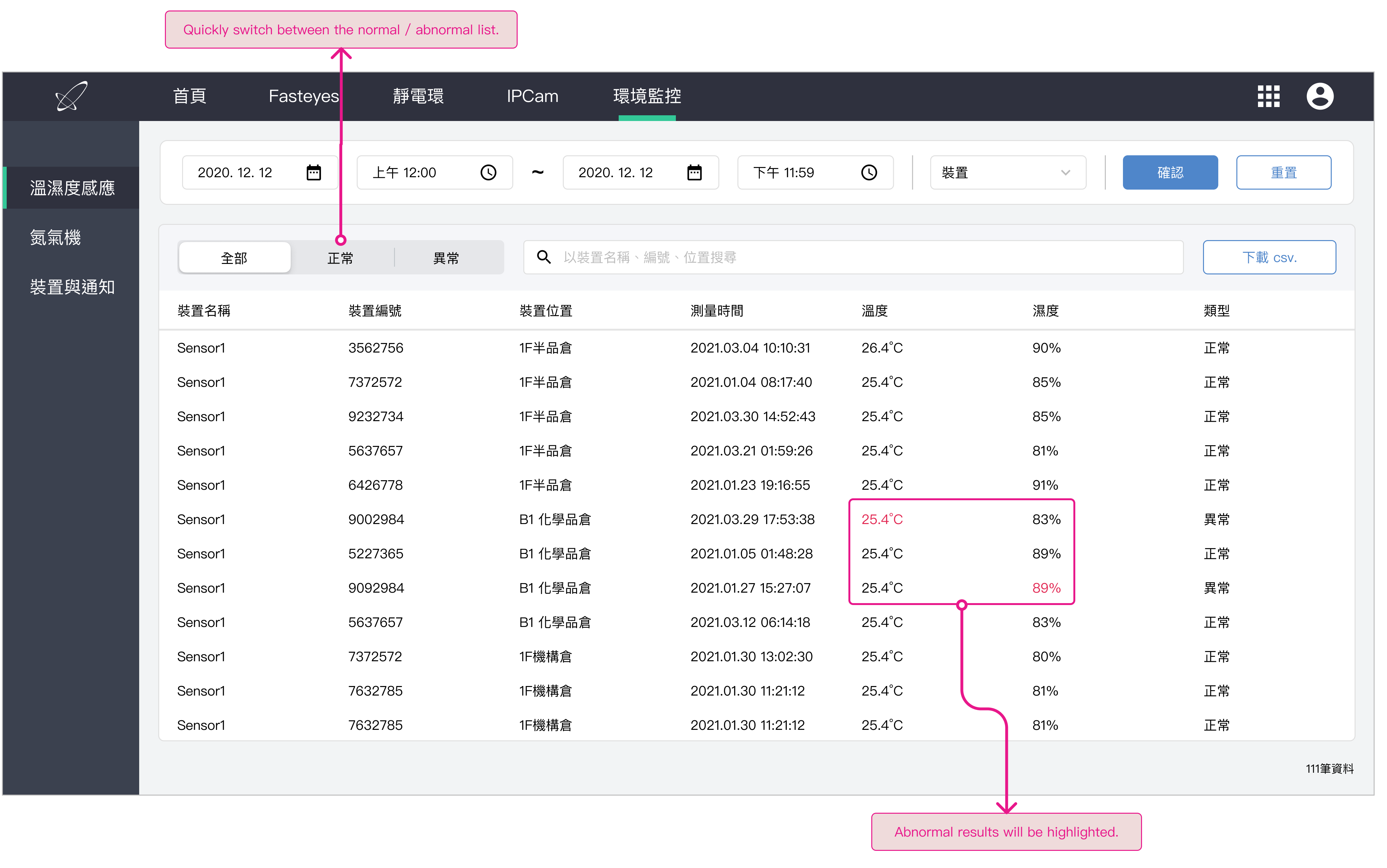
To be Continued
The project is still in the developing process, but we have done all the planning, designing, and most importantly, a thorough discussion with our client.
Based on interviews with several customers, we found that IoT integration solutions are urgent to tech companies, especially for those which have factories. Many of them have even already been interested in buying this platform service.
As an extended application based on Fasteyes, we are all looking forward to making this platform becoming a brand new standard IoT service.
Next Project >>
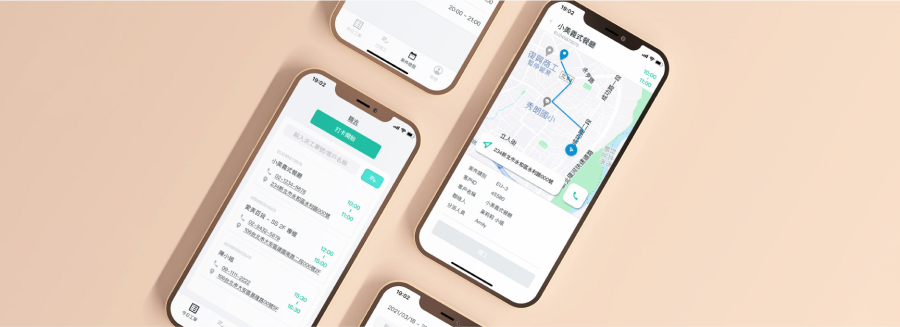
All rights reserved © 2021 Astrid Lin